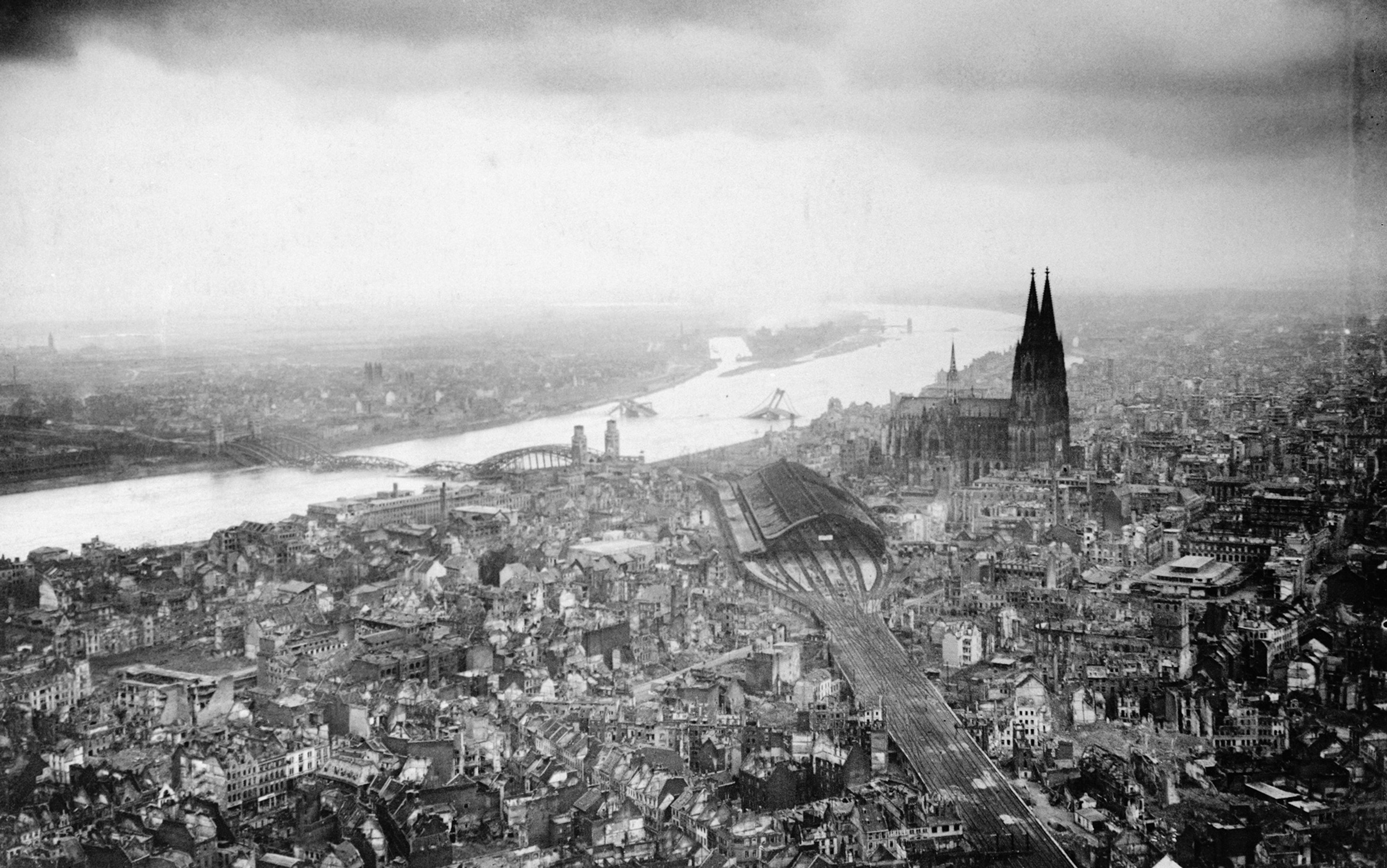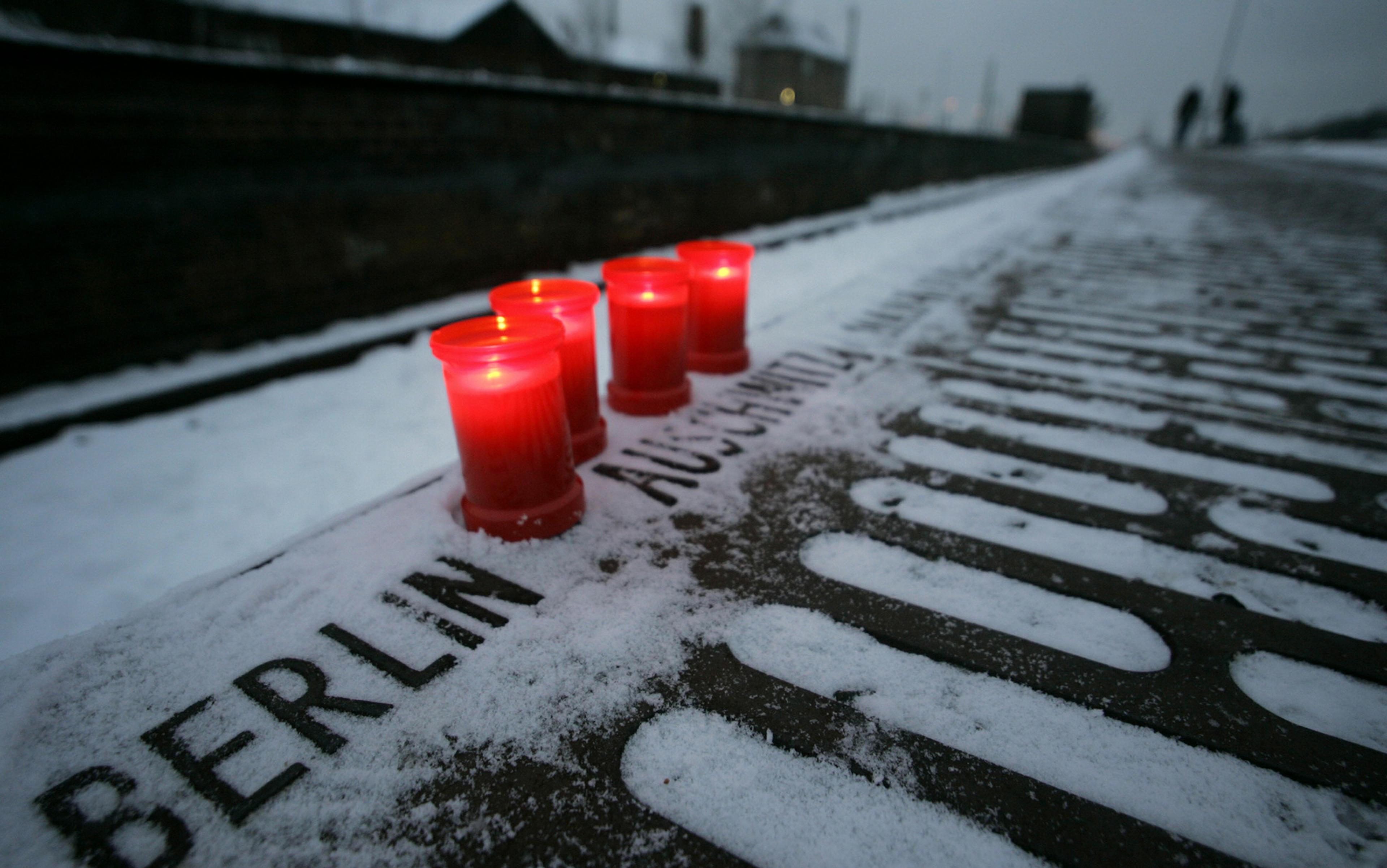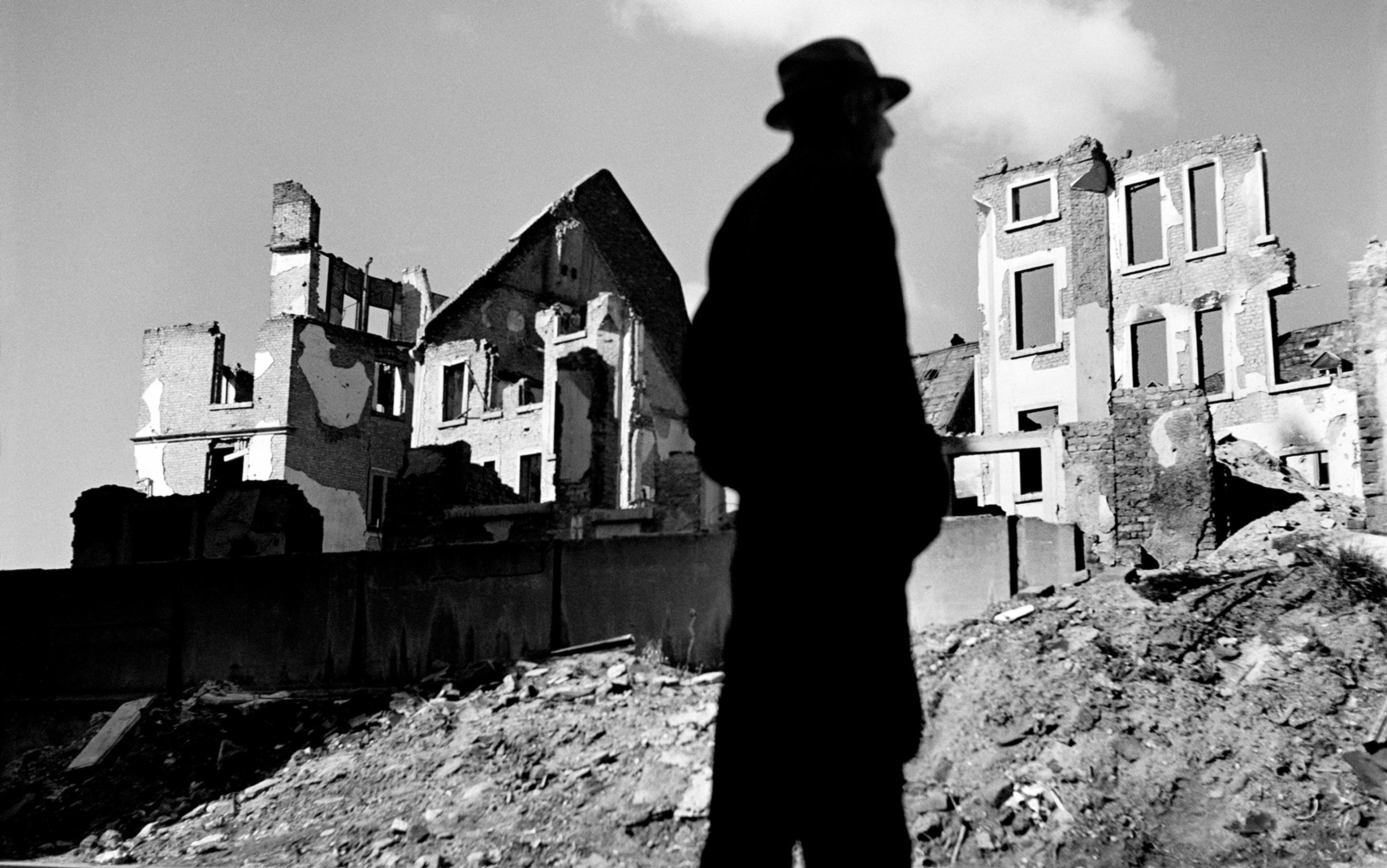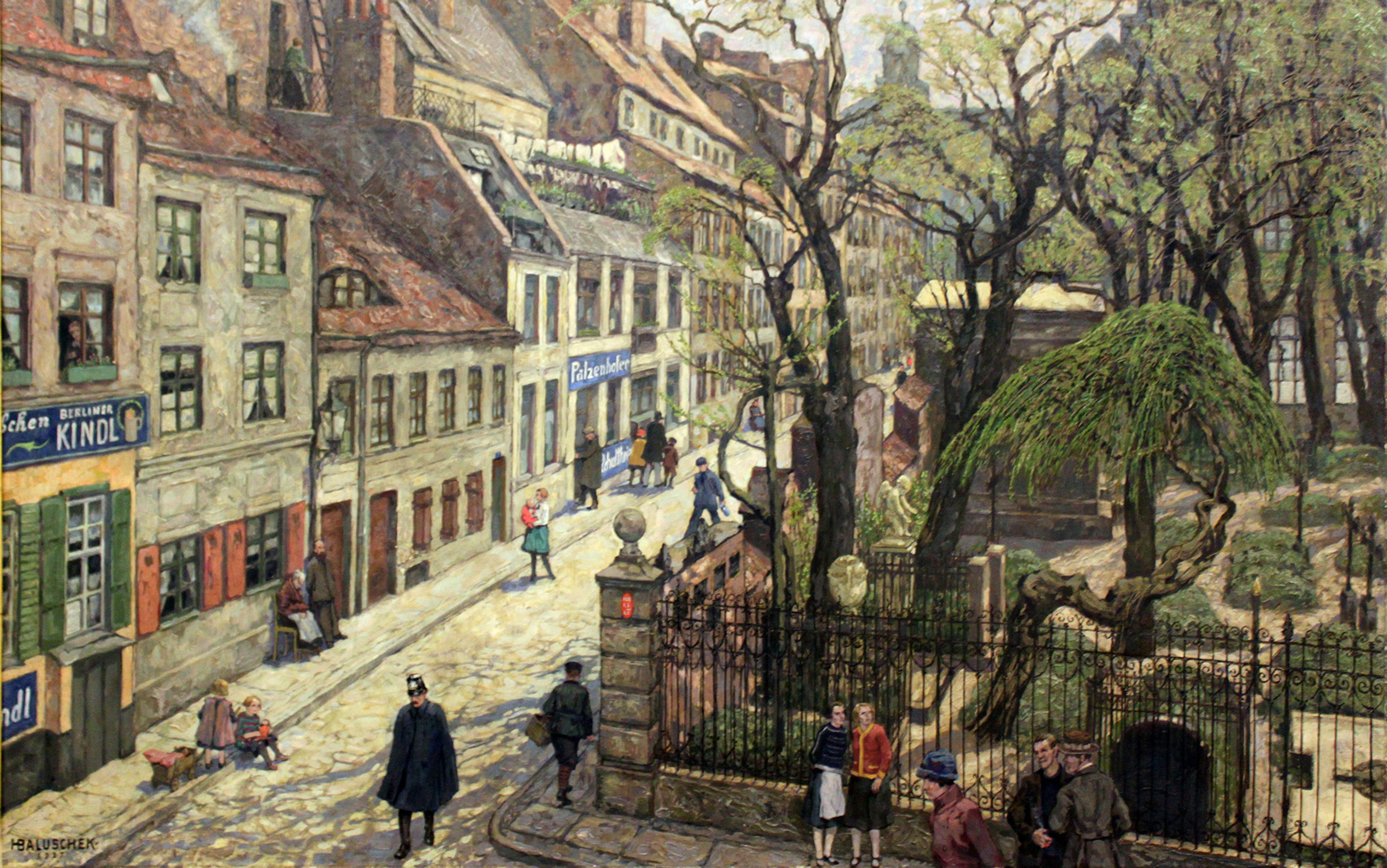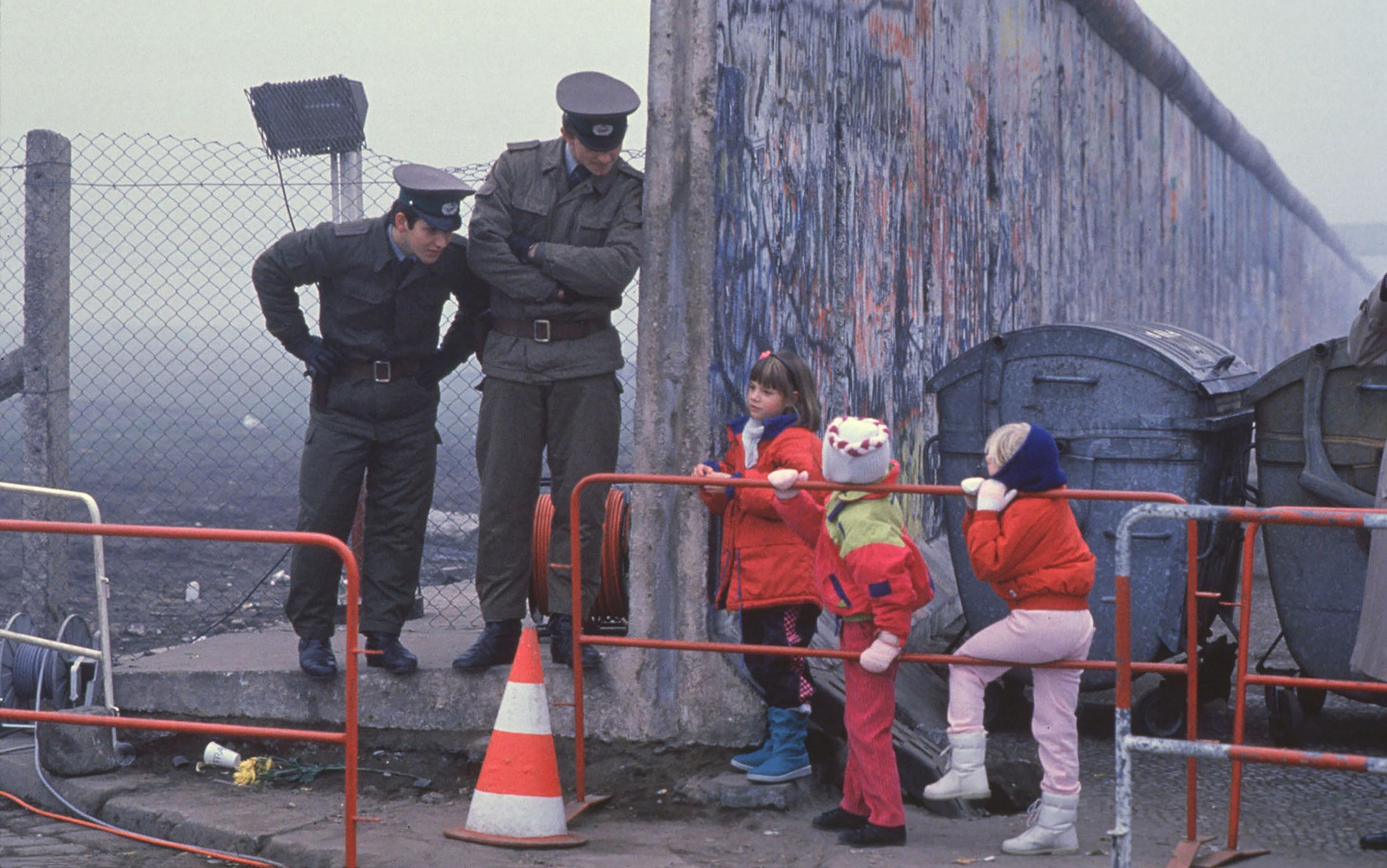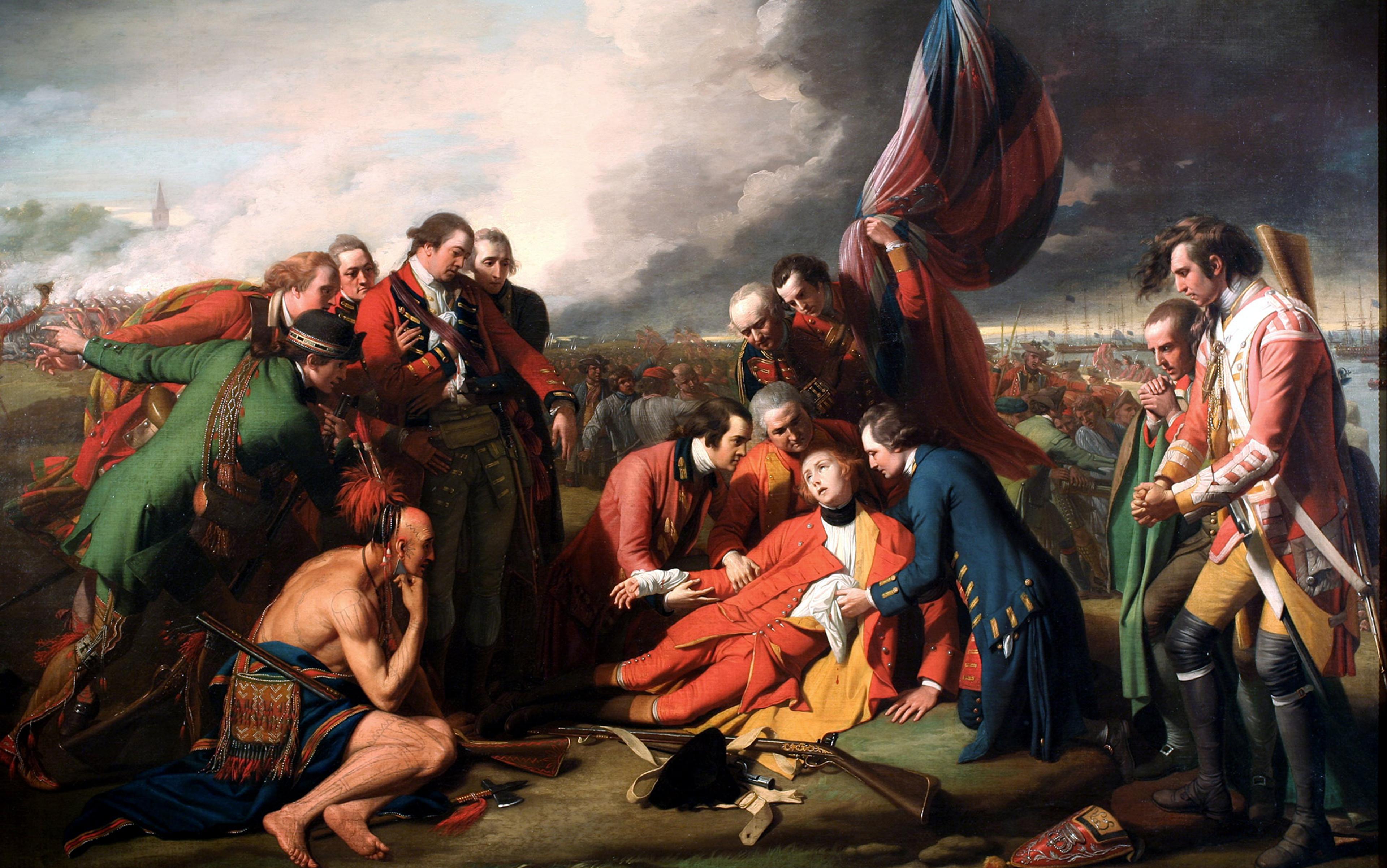In the summer of 1947, two years after the end of the Second World War, the British historian Eric Hobsbawm travelled to the British occupation zone of Germany to re-educate young Germans. A recent graduate of King’s College, Cambridge, where he had also joined the Communist Party, Hobsbawm was working on his PhD dissertation and had just secured his first appointment as a lecturer at Birkbeck College in London. Born in 1917 into a Jewish family in colonial Egypt, Hobsbawm grew up in Vienna, his mother’s hometown, and witnessed the street clashes between Nazi stormtroopers and Red Front fighters in Berlin in the tumultuous last years of the Weimar Republic. His parents had died young, before 1933, but most of his Viennese family was murdered in the Holocaust. The British government didn’t make use of his German during the war, and his career in re-educating postwar Germans, arranged by his Cambridge colleagues, was cut short by the anti-Communist purges of the early Cold War.
A seminar at an imperial hunting lodge in the countryside of Lower Saxony was Hobsbawm’s first encounter with Germans who grew up in the Third Reich. Among the participants was Reinhart Koselleck, then in his first semester at Heidelberg University. Koselleck had joined the Wehrmacht in February 1941, two months before he turned 18. The following year, a German artillery wagon crushed his foot on the march towards Stalingrad, which probably saved his life. Koselleck was sent home before the gruesome debacle of Hitler’s army began. His two brothers were killed in the war – the younger brother during an Allied bombing raid that destroyed the family home, and his older brother, a committed Nazi, in the final weeks of the war; one of his aunts was gassed in the Nazi euthanasia campaign in 1940. In the last months of the war, Koselleck was sent again to the Eastern Front, which by then had reached German territory. His unit fought against the Red Army in Moravia. Captured by the Soviets on 9 May 1945, he had to march on foot to Auschwitz for two days, together with thousands of other German prisoners of war. There he took part in the dismantling of the IG Farben chemical factories, which were sent by train to the Soviet Union for reassembly – the very same factories adjacent to Auschwitz-Birkenau where Primo Levi was forced to work until the liberation of the camp by the Red Army in January.
By the end of the summer, the German prisoners were put on eastbound trains themselves. A few weeks later, Koselleck arrived in Karaganda in central Asia, an industrial coalmining city built on the Kazakh steppe, primarily by Stalin’s deportees of the 1930s and ’40s, many of them Volga Germans and other ethnic minorities. Not all prisoners survived the transport, and most were not initially in a condition to work at all. Karaganda, a territory almost the size of France, was a bleak place with harsh cold winters and brutal summer heat, dotted with Gulag camps, including separate camps for German and Japanese prisoners of war. Koselleck survived the camp thanks to another inmate who recognised the symptoms of a potentially fatal illness, and the special care of a German doctor, also a POW, who before the war had been an assistant to his uncle, a pathologist at Leipzig University. After 15 months at Karaganda and yet another surgery, this doctor declared Koselleck unable to work but strong enough for transport back home. Arriving at the border between Poland and the Soviet zone of occupation in Germany in September 1946, Koselleck was given a copy of The Communist Manifesto (1848) by Karl Marx and Friedrich Engels. Later in the French zone, where his family now lived, he was briefly arrested by the police, who took him for a vagrant. American Baptists replaced his ragtag Soviet prisoner clothes and provided him with a copy of the Bible. When Koselleck finally arrived home, his father politely asked for the visitor’s name – he didn’t recognise his own son.
In his memoirs Interesting Times (2002), published more than 50 years later, Hobsbawm recalls his 1947 conversations with Koselleck, his first encounter with an eyewitness of Stalin’s extensive camp system. Among the Koselleck papers, only a drawing of the young Hobsbawm (with enormous sunglasses and a gap between his teeth) documents the meeting. Apparently, the two men, who couldn’t have been much more different, got along well. But it’s safe to presume that Hobsbawm listened to a former Wehrmacht soldier’s report from Stalin’s Gulag with a dose of scepticism. Conversely, it must have been odd for Koselleck to have a British communist teaching him democracy only a few months after he underwent the Soviet-style mix of ‘re-education’ in Marxism-Leninism plus redemption through forced labour.
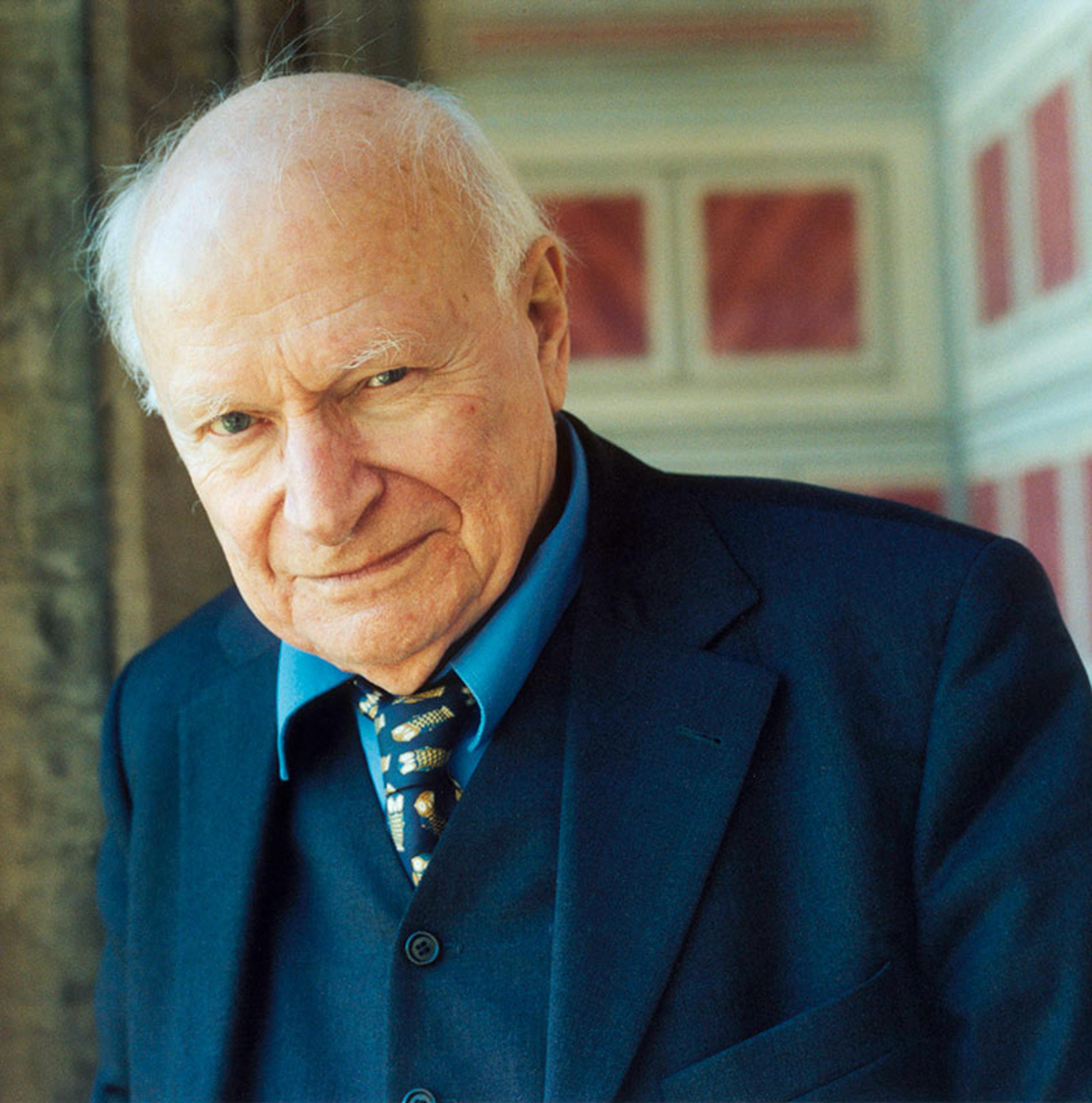
Koselleck in 1992. Photo by AKG London
Hobsbawm went on to become one of the most prolific historians of the 20th century, one with a global audience. His writings in social and economic history were crisp and commercially successful, and animated by the belief in the political and moral necessity of an alternative to the catastrophe of capitalism – for Hobsbawm, the systemic cause behind the rise of fascism. For Koselleck, too, the midcentury crises necessitated a new understanding of history. He sketched out his Historik (or historical theory) in the form of elegant, abstract theoretical essays, written over several decades. Koselleck’s work is less accessible than Hobsbawm’s sweeping accounts, but it’s also groundbreaking and has been translated into many languages, especially in recent years. At opposite ends politically, both Koselleck and Hobsbawm pioneered critical approaches to the study of the past, spurred by the crises of their time.
Hobsbawm never left the Communist Party and, after the collapse of global socialism in the 1980s and ’90s, liberal historians such as Tony Judt and François Furet scolded him for his obstinacy. Today, however, Hobsbawm’s prediction of our world of endless wars, enormous inequalities, looming environmental disasters and other ruins of neoliberalism in the epilogue of The Age of Extremes (1994), his history of the 20th century, appears prescient. Koselleck, politically closer to Furet, stubbornly refused to distance himself from Carl Schmitt, the Weimar conservative political theorist and jurist who (without success) tried to impress the Nazis after 1933 with his anti-liberal and thinly veiled antisemitic conceptions of international law. Schmitt became one of Koselleck’s postwar mentors and remained a lifelong influence (their extensive correspondence during 30 years was published in German in 2019). His intellectual affiliation with Schmitt contributed to Koselleck’s reputation as a brilliant yet politically suspicious ‘philosopher of history’, especially in the Anglophone world.
To call Koselleck a suspicious philosopher of history isn’t without irony. Unmasking the dangers of modern philosophies of history propelled him to sketch out a completely new understanding of history. For Koselleck, these modern philosophies were essentially a secularised version of eschatology, that is – theological prophecies of future salvation, an interpretation he adopted from his Heidelberg teacher Karl Löwith. Koselleck aimed for a truly secular history, non-providentially rooted in the evidence of past experiences. Following the catastrophes of two world wars, Koselleck, in 1953, and still at the beginning of his career, postulated that we need to discard the conceptions of history that provided ammunition for the ideological furies of the 20th century – Nazism, but also the dangerous confrontation of Soviet communism and American liberalism in the nuclear age – and start rethinking from scratch what constitute the actual ‘conditions of possible histories’. For Koselleck, all modern ideologies claimed to have the ‘laws of history’ on their side to justify violence by all means. Dismantling the concept of history and coming up with a new theory of how histories actually unfold – chaotic, contingent, messy and ferocious, yet with discernible patterns – was therefore the most important task for historians.
This remained a theme to which Koselleck would return time and again, up to his very last published essay. In ‘What Repeats’, written the summer before he died unexpectedly in 2006, Koselleck claimed that we can make novel experiences only if there are structures of repetition within the chaotic stream of events that we call history. History is neither just more of the same – that is, constant and circular repetition (Friedrich Nietzsche’s idea of ‘eternal recurrence’) – or the experience of Bill Murray’s character in Groundhog Day, in which we start over, again and again. Both repetition and rupture are conditions of possible histories. The urge to understand what’s new motivated Koselleck to identify structures of repetition in history: geographical and climatic preconditions that, independent of humans, make all life possible; biological conditions, such as birth and death, human sexuality and generations; our institutions, for instance work and law, but also language that captures human experiences; and finally historical events themselves (such as a worldwide pandemic), which contain their own repetitive structures. Only by understanding what repeats can we discern what’s new and unprecedented in our present. As we find ourselves again in a world of global convulsions and crises, in which events have surprised many, Koselleck reminds us to sort out what repeats in a moment of rupture. This is perhaps why today there is an uptick in interest in Koselleck’s work. Suddenly, Reinhart Koselleck, the theorist of history, reads like our contemporary.
Koselleck wrote only two monographs in his life (and one textbook on Europe in the age of revolutions, together with Furet). Critique and Crisis, the revised version of his dissertation, became an instant classic after its German publication in 1959. In this slim book, Koselleck unfolds one central argument. He locates the origins of 20th-century ideologies, which all, in one way or another, claimed to fulfil the laws of history, in the political constellations of the late-18th century. Excluded from actual political power, French and German Enlightenment philosophers circulated in the new social spaces of the salons or Masonic lodges. They formulated a moral critique of the Old Regime by employing new concepts such as ‘history’ or ‘humanity’. This new, seemingly nonpartisan morality eroded the state’s legitimacy and power, culminating in the terror of the French Revolution. A version of this argument has been a staple of conservative critics of the Enlightenment since 1790, from the Irish philosopher and statesman Edmund Burke to the aforementioned Schmitt, but Critique and Crisis offered a more original and enduring insight, what Koselleck later termed the ‘temporalisation of all modern concepts’.
As he explains in the preface to the English translation (belated by almost 30 years), Critique and Crisis aimed to be more than an interrogation of the philosophies of history that triggered the dissolution of Old Regime. Koselleck had aimed:
to highlight more persistent structures of the modern age which may be seen as elements of historical anthropology: the sense that we are being sucked into the open and unknown future, the pace of which has kept us in a constant state of breathlessness ever since …
For Koselleck, the Enlightenment philosophies of history propelled the world into the vortex of an accelerated ‘modern time’ (in German literally ‘Neuzeit’, that is ‘new time’), a new conception of temporality that views the present and the past from the perspective of a redemptive future. Communism, for example, was a political movement that was entirely built on expectation. For 20th-century ideologies, it’s the future that dictates how to act, not present political exigencies or past experiences.
Different layers of historical experience are present at any given moment
The urgent, pessimistic tone of Critique and Crisis became muted in Koselleck’s writings in the 1960s. His second monograph, ‘Prussia Between Reform and Revolution’, published in 1967 (and never translated into English), is a social, legal and conceptual history of the failed attempt by Prussian educated elites to contain the impact of the French Revolution by introducing constitutional reforms. The monograph was Koselleck’s habilitation, the German entry ticket for a full professorship. Based on extensive archival research and at more than 700 pages, it was held together by a theoretical argument as well. According to Koselleck, different temporal structures of repetition – in the case of post-1789 Prussia: the law, a reform-minded state bureaucracy, and new social movements, which are each analysed separately in three different parts of the book – move at different velocities. By definition, the law and administration are always running behind the explosive social movements, which themselves are triggered by reforms. The clash between the different times of law, administration and social change erupted in the Revolution of 1848. ‘Prussia Between Reform and Revolution’ was also a subtle commentary on the eruptive transformation that West German society was about to make during and after the student protests. As much as the reform-minded parts of the political class in West Germany were willing to accommodate the demands of new social movements, they weren’t able to contain the violence of 1960s radicalism completely. It was the new Social Democratic, nominally ‘progressive’ government that had to deal with the terror of the Red Army Faction after 1970.
In 1968, Koselleck was a professor at Heidelberg, giving seminars on Marx with freshly minted Marxist (or Maoist) students, but also, just as unusually for a German historian of his generation, on Nazi concentration camps. In 1973, he accepted a chair at the brand-new university at Bielefeld, built in the Brutalist modern style as a campus in one enormous, spaceship building outside the city. Bielefeld was one of several so-called reform universities that were meant to expand and democratise German elite education, and Koselleck belonged to the founding advisory board that set up its innovative structure and recruited new faculty. A city in eastern Westphalia so nondescript that an early internet conspiracy theory jokingly claimed it’s not a real place, Bielefeld became one of the most vibrant German universities of the late-20th century.
The 1970s and ’80s were the heyday of West German academic publishing, funded by generous public research grants for collaborative work, especially if interdisciplinary in nature. Most of Koselleck’s time and energy during this time went into editing what became arguably the most impressive accomplishment of postwar German historiography. Internationally without parallel, the lexicon Geschichtliche Grundbegriffe (‘Basic Historical Concepts’) would bring together historians (who were, like the entire profession at the time, almost exclusively male) with scholars in other disciplines, from law to philosophy, who collaborated over years on lengthy articles. Published in eight hefty volumes between 1972 and 1997, the articles of this ‘historical lexicon of the political and social language in Germany’ chart the evolution of concepts from their classical origins to their 18th- and early 19th-century usage primarily in German, French and English. Ancient concepts such as ‘republic’ or ‘democracy’ gained new meanings, and new concepts such as ‘class’ or ‘race’ reflected and fuelled the social and political upheavals of the modern age. Koselleck intellectually held together this enormous project with more than 100 contributors. He co-wrote several articles (for example, on ‘crisis’ and ‘history’), which were often the length of a monograph, and he published a number of methodological essays that established Begriffsgeschichte, or conceptual history, as a method.
Koselleck argued that concepts such as ‘the state’ or ‘the people’ are used by different sides in a historically specific social and political contestation – in our time, for example, for and against the ‘welfare state’. These basic concepts are contested but also unavoidable for making political arguments. Conceptual history is therefore a history of these (synchronous) contestations. Anglophone historians of political languages such as John Pocock or Quentin Skinner would agree, but would view as ‘metaphysics’ Koselleck’s insistence that concepts contain (diachronically) different layers of historical experience that are present at any given moment. For Koselleck, the whole point of conceptual history is to uncover the potentiality of concepts in the present, even or especially if those social and political agents who employ these concepts (for or against ‘the state’, in the name of ‘the people’) are unaware of their past usages and possible unintended consequences (for example, the unavoidable question of who belongs to ‘the people’ and who doesn’t). Always ahead of historiographical fads, Koselleck and his students also explored how the meaning of social and political concepts shifts in translation from one language to another, taking ‘citizenship’ as an example. Conceptual history became closely identified with Koselleck’s name, and he remains the touchstone author for a methodological approach that, like much else, has gone global in recent years.
By the late 1980s, however, Koselleck felt that the lexicon format and conceptual history as a method had increasingly become a straitjacket for his more ambitious interest in a new theory of history. Ironically, the conceptual historian Koselleck became more and more interested in historical events that can’t be captured by language (or by late-20th-century concepts such as ‘trauma’ or ‘memory’). After his retirement in 1988, Koselleck accepted visiting professorships at Chicago, Columbia and Paris. Around this time, his work was finally translated into English and French, and he accepted invitations for conferences and lectures around the world, which he would use (unwittingly for his audiences) to map out his theory of history.
For his lectures, Koselleck would sketch out on a few handwritten pages the main line of argument in the form of numerical points; these notes looked like sketches (whenever he was bored, Koselleck made satirical drawings, first of his teachers; later in life, of his colleagues). Asked to turn his lecture into a journal article or chapter for a conference volume, he would slowly expand on these notes by reworking formulations and adding quotations (from folders of material on particular concepts accumulated over the years, starting with a cigar box of index cards for his dissertation, now among the Koselleck papers at the German Literature Archive in Marbach). His friend, the Classics historian Christian Meier, reports that it once took him more than a couple of years of constant reminders and exasperated appeals to receive the manuscript of Koselleck’s lecture (on the connection between the experience of defeat and paradigm shifts in historical knowledge, one of his most important essays) in written form.
After another decade or two, Koselleck would again revise these miscellaneous publications for collections of his essays, only two of which appeared in his lifetime: Vergangene Zukunft (1979), published in English as Futures Past (1985), and Zeitschichten (2000). Two further volumes of essays appeared posthumously; another two selections were translated into English: The Practice of Conceptual History: Timing History, Spacing Concepts (2002) and, most recently, Sediments of Time: On Possible Histories (2018). The thematic range of these essays is breathtaking. Koselleck’s approach led him to write about topics that became fashionable across the humanities only much later, for example, on dreams and prognoses, death and iconography, war monuments and memory, and always, in new variations, on time: the times of law, history, justice, concepts, events and what is now called ‘deep time’, that is – the time before the Anthropocene.
Only in retrospect does it become clear that all of these scattered essays revolve in different iterations around one central question: what are the conditions of possible histories? According to Koselleck, three basic oppositions structure all historical experience. Every possible history is conditioned, first, by before and after, for example the anthropological span between birth and death that makes each life singular and part of a shared experience distinct from other generations, times and experiences. The possibility for new beginnings is as much a part of the human condition as the necessity of death or the ability to kill. Second, all possible history can’t escape the political difference between inner and outer (or, in a conflict, friend or foe). Hence, Koselleck’s repeated critique of the idea that human difference can be morally resolved and not just politically mediated. Only the recognition of difference allows for compromise. Finally, Koselleck claims that the opposition between above and below, ‘master’ and ‘slave’ in the terminology of Hegel and Marx, structures all social relations in history. This isn’t to say that more equality and freedom can’t be gained in the course of events, but that social hierarchies permeate all forms of human community, generating new conflicts and hence new histories.
‘This is when events emerge: chains of events, cascades of events that withhold themselves from language’
What we call ‘history’, in Koselleck’s understanding, is the rush of contingent events that’s conditioned by these formal oppositions. There’s neither reason in history nor some kind of Hegelian teleology or theodicy. History itself is without meaning or direction. Only historical analysis, theoretically informed, might begin to discern the pattern of its ‘absurdity’ and ‘abysmalness’. The analytical grid that Koselleck suggested as the baseline of his theory of history – before and after, below and above, inner and outer – also conditions historical writing itself. It’s crucial for the viewpoint of historians, whether they are a contemporary or born later, and are thus an eyewitness or a retrospective narrator of events, respectively; whether they are situated higher or lower in social or political terms, for example, whether they are on the side of the winners or losers of the conflict they are describing; and, finally, whether they belong to the political, religious, social or economic community whose history they are writing about, identifying themselves more or less critically with it, or whether they are looking on from outside.
For Koselleck, the decisive distinction between his theory of history and hermeneutics (or Michel Foucault’s ‘discourse analysis’) is his insistence that not all experiences can be captured by language. As he explained in a lecture delivered in honour of his teacher Hans-Georg Gadamer in 1985:
When the flexible distinction between inside and outside is intensified into an impassioned dichotomy between friend and enemy, when the relation between above and below leads to slavery and irrevocable humiliation or to exploitation and class struggle, or when the tension between the sexes leads to degradation – this is when events emerge: chains of events, cascades of events that withhold themselves from language, to which every word, every sentence, every speech can only react.
It’s precisely these cascades of events that we’re struggling to put into words that interested Koselleck as a historian and theorist.
Some of his most compelling essays explore the limits of language. One example is ‘Terror and Dream’, written originally as the afterword to the German edition of the German-Jewish writer and émigrée Charlotte Beradt’s The Third Reich of Dreams (1966; English translation 1968), a remarkable collection of excerpts from about 300 dream protocols that Beradt had collected from her Berlin neighbours and smuggled out of Nazi Germany before war and genocide. In this essay, subtitled ‘Methodological Remarks on the Experience of Time during the Third Reich’, Koselleck argues that these dream protocols capture the past reality of the Third Reich more than any other historical source. For dreams are prelinguistic manifestations of Nazi terror in eventu, that is, at this very moment; they reflect not only the fear and humiliation of previous days or weeks but are themselves a form of terror that is unfolding in and through these dreams. In this respect, these nightmarish dreams anticipated the totalising terror of the camps more precisely than any political commentary at the time.
Koselleck also spent decades studying visual representations of mass death. He catalogued literally thousands of photographs (often taken by him) of war memorials all over Europe and North America that he used as material for essays on the iconography of the veneration of the dead. Despite some national differences in the imagery, the message of most war memorials independent of their particular cause is the same. Not dying but ‘to die for’ is the theme of war memorials. They claim to commemorate the dead but are built by and for the survivors, for whatever social and political identity the winners and losers deem to secure for the future. These identifications change over time, Koselleck shows, which is why most war memorials lose their meaning for the next generation, or are eventually defaced and toppled. Only the more intimate monuments endure, which represent death and mourning itself without any political identification for the survivors – such as Maya Lin’s Vietnam Veterans Memorial (1982) or Käthe Kollwitz’s sculpture The Grieving Parents (1932), the memorial for the loss of her 18-year-old son Peter, who was killed on the battlefield in Flanders during the First World War. These monuments speak to us not by commemorating what was once deemed a worthy cause or sacrifice, but because death and dying are part of our lives as well.
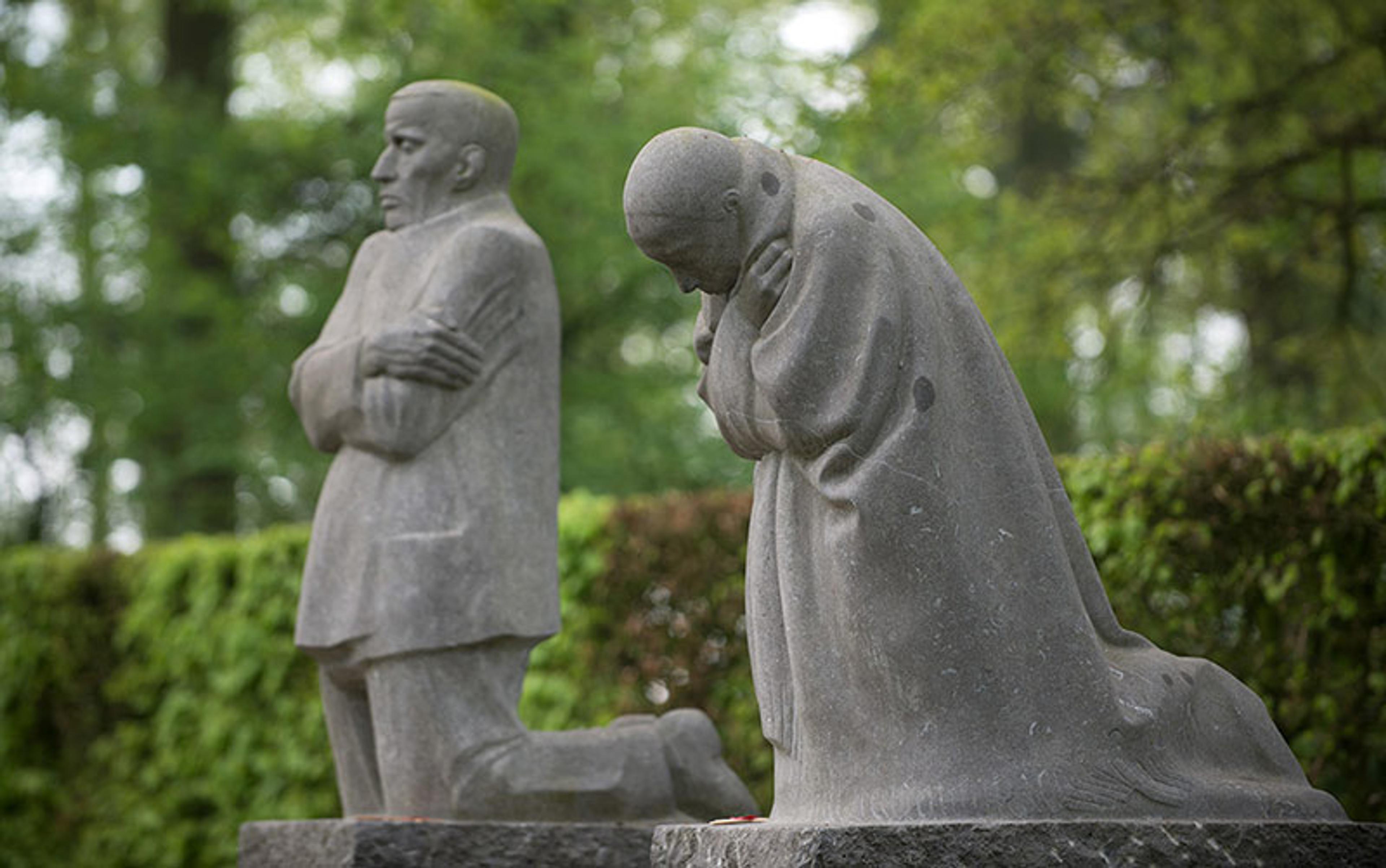
The Grieving Parents by Kaethe Kollwitz at the German WWI military cemetery in Vladslo, Diksmuide, West Flanders, Belgium. Photo by Uwe Zucchi/picture alliance via Getty
Koselleck’s wartime experience pulsates through his analytical essays, as does his distaste for ideologies of any kind. A short and charismatic man, sociable, curious, always with a quizzical expression, he walked with a slight, hardly noticeable limp, a reminder of events that can’t be put into words, that ‘flow into bodies like a mass of lava – immovable and inscribed’, another geological metaphor that he employs for his theory. History was for Koselleck nothing less than the ‘science of experience’ (Erfahrungswissenschaft), a repository of past experiences that we can and should narrate from different viewpoints but also dissect in search of our blind spots, structures that were there before us and that will – most likely – be there after us. Koselleck’s historical theory, his Historik, is therefore the exact opposite of a philosophy of history and has little in common with more contemporary philosophical or literary theories of history à la Hayden White or Paul Ricœur. It’s the only theory of history sketched out by a historian after the ‘age of extremes’.
Many diagnoses of crisis that described his own time as unique have become historical themselves
From his early critique of the philosophy of history (and of the naive positivism of most historians) to his theory of the different layers of historical experience that are present at any given moment in time, Koselleck draws a surprising conclusion. History itself teaches us nothing, but the ‘science of experience’ allows us to anticipate how possible histories will unfold. Historical events are always new and replete with surprises for those living them. But if, as Koselleck demonstrates in his essay ‘The Unknown Future and the Art of Prognosis’, some predictions turned out to be true, ‘it follows that history is never entirely new, that there are evidently longer-term conditions or even enduring conditions within which what is new appears.’ To give a different example, Hobsbawm’s belief in the coming of a new communal society, without inequality and injustice might have been misguided since it was entirely based on expectation. But from his own experiences with global capitalism in the 1930s, Hobsbawm formulated in 1993 a more realistic scenario of our post-Cold War era than his liberal triumphalist critics, who were celebrating ‘the end of history’.
‘As more temporal layers of a possible repetition entered into the prognosis,’ that is, the more the prognosis is based on previous experiences,
the more likely the prediction was to turn out to be correct. The more a prediction referred to and relied upon the incomparability and uniqueness of the coming revolution, the less likely it was to be fulfilled.
This theoretical distinction, which Koselleck drew from the example of the German poet and writer Christoph Martin Wieland’s predictions in 1787 about the coming revolutions in Europe, also holds for Koselleck’s theory of history. Many – not all – diagnoses of crisis that described his own time as unique and surpassing all previous experiences have, from our perspective, become historical themselves. This isn’t the case, however, with the theoretical grid in which all histories unfold – before and after, inner and outer, above and below – that he carefully parsed out. If we know the conditions of possible histories, we will not be entirely surprised by what the future holds for us.
